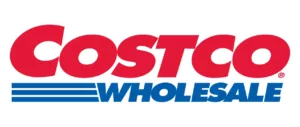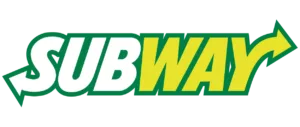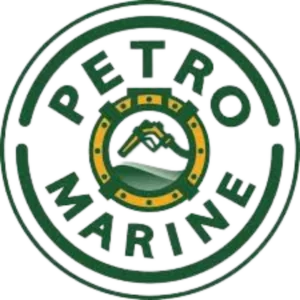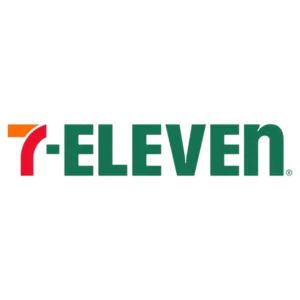I learned the value of solid training on a windy Tuesday in a loading bay. A forklift operator pointed to an extinguisher with the gauge in the red and a tag that had not been signed in months. There was no fire and no headline, just a quiet miss that could have cost a lot if smoke had ever shown up. That kind of moment is why a structured Fire Extinguisher Inspection Course matters. It turns “we have extinguishers on the wall” into “we know they work, and our logs prove it.”
What OSHA Expects And How Training Fits
OSHA requirements for portable extinguishers are straightforward. You need the right units in the right locations, employees trained to use them, monthly visual checks, annual maintenance by qualified personnel, and clear, accessible records. Focused programs, such as fire extinguisher inspector training, connect those expectations to everyday habits.
Good training helps frontline leaders and supervisors:
- Spot common failures quickly, such as missing tamper seals, blocked access, low pressure, corrosion, damaged hoses, illegible labels, and expired tags
- Document correctly, including who checked, what they checked, what was fixed, and when the next check is due
- Coordinate with service vendors for internal maintenance or hydrostatic tests
- Coach the team so people understand when to use an extinguisher, when to evacuate, and how to report problems
Think of OSHA as the “what” and training as the “how” that keeps audits calm and predictable.
What Portable Inspection Training Covers
A strong program moves from basic concepts to confident, hands-on checks. In practice, portable fire extinguisher inspection training usually covers:
- Extinguisher types and hazards, showing how A, B, C, and K ratings match risks in kitchens, warehouses, labs, and offices
- Placement and visibility, including distance to hazards, clear paths, signage, mounting height, and required clearance
- A monthly visual inspection routine for gauges, pins and seals, weight and fullness clues, hoses and nozzles, body damage, bracket fit, label legibility, and accessibility
- Annual and multi-year tasks that your outside vendor handles and how your team documents them
- Tagging and recordkeeping so every check leaves a clear trail
- Practical walkarounds using a checklist and short scenarios so the routine feels natural
By the end, inspectors know exactly what “in service and ready” looks like and how to respond when something is not.
How Training Reduces Citations, Costs, And Risk
OSHA citations and insurance findings often stem from small mistakes that accumulate: blocked extinguishers behind pallets, malfunctioning gauges, or tags that stop mid-year. When inspectors are trained well, they catch these issues early and correct them before an auditor ever walks the floor.
That prevents repeat findings, shortens visits from your authority having jurisdiction, and reduces the likelihood that a minor incident will escalate into a significant loss. You also save money by reducing urgent service calls, preventing product damage from small fires that could have been contained, and avoiding time lost retracing inconsistent logs.
On-site Training Versus Online Options
Different facilities and teams learn best in different ways. Many organizations combine live sessions with digital modules to reach every shift and location, especially when some staff work nights or in remote areas. In many cases, an online component is delivered as a fire extinguisher inspection certification online, which makes it easy to provide consistent content and track completion in one place.
On-site sessions are ideal for:
- Hands-on walkarounds on your own floor
- Live questions about specific hazards and layouts
- Demonstrations that show exactly how inspections should look at your site
Online modules are useful for:
- Delivering the same message across multiple locations
- Allowing self-paced learning between other duties
- Providing quizzes, certificates, and easy documentation
A short in-person talk followed by a focused online module often gives you the best of both worlds.
Budget Planning And Certification Costs
Leaders naturally ask how much this will cost. Pricing varies by provider, course depth, and number of learners. When discussing budgets, it’s helpful to look beyond the price per seat and consider the overall value.
Consider questions such as:
- Are assessment retakes included
- Do you receive printable checklists, inspection forms, and tag examples
- Are supervisor dashboards and completion reports part of the package
- Is group or multi-site pricing available?
- Can examples be tailored to your specific hazard?s
The cheapest option on paper can become expensive if it lacks essential tools, tracking, or relevance, especially if you later need a second program to close knowledge gaps.
From Classroom To Floor: Checklists, Tags, And Clean Logs
Training only works if it becomes part of daily routines. To protect your results, build a simple rhythm that everyone can follow:
- Assign owners by zone so each extinguisher has a responsible person
- Use a one-page checklist that is consistent across sites
- Walk the loop with the same sequence every time: gauge, seal, pin, hose, body, label, accessibility, bracket
- Fix what you can safely fix in the moment, such as clearing minor obstructions
- Pull and replace units that are damaged or show pressure problems, then call your vendor as needed
- Tag and record each check in a shared log, and have supervisors review exceptions regularly
Over time, your tags and logs should read like a clear story of what was checked, what was found, and what changed.
Choosing The Right Inspection Course
Not every program is created equal. When evaluating options, look for a provider that offers a fire extinguisher inspector course centered on practical application rather than just theory.
Key qualities include:
- Alignment with NFPA 10 and OSHA requirements, explained in plain, practical language
- Scenario-based examples that match your type of facility
- Walkaround videos or demonstrations that model real inspections
- Downloadable checklists, tag examples, and placement guides
- Language options and accessible design for different learning needs
- Supervisor reporting tools and easy certificate verification
- A clear path for refreshers so skills stay sharp
A good course removes guesswork and helps your people spot problems without slowing production.
Earning And Maintaining Certification
Once inspectors are trained, they require documentation that is easy to verify and simple to maintain. A strong program issues a fire extinguisher inspector certification that is more than a one-time document.
Look for features such as:
- Individual certificates that can be stored for audits and insurance reviews
- Expiration reminders so refreshers happen before coverage lapses
- Short refresher paths for experienced inspectors and deeper options for new leads
- Brief update modules when standards, layouts, or internal policies change
When new equipment arrives or processes change, add quick update sessions to ensure inspection coverage remains aligned with reality.
What You Will Learn in Fire Extinguisher Inspection Certification Training
A well-designed program builds confidence in four core areas:
- Hazard awareness, including how extinguisher types match specific tasks and risks, instead of just wall charts
- Inspection fluency, so monthly checks are fast, consistent, and effective at catching small issues early
- Documentation that stands up to scrutiny, with tags and logs that answer auditor questions before they are asked
- People coaching, so inspectors can lead short safety talks that clarify when it is appropriate to attempt a discharge and when immediate evacuation is the safest option
By the end, inspectors are not guessing. They follow a repeatable routine that protects both people and property.
Role Clarity: Inspectors, Employees, And Vendors
Extinguisher safety is a shared responsibility, and clear roles prevent tasks from slipping through the cracks.
- Inspectors conduct monthly checks, tag and log issues, perform quick fixes within their scope, and make timely vendor calls when they encounter more serious problems.
- Employees are expected to know where extinguishers are located, keep paths clear, and understand basic operation when conditions permit.
- Vendors are responsible for annual maintenance, internal checks, hydrostatic testing, replacement, and formal service tags.
When everyone understands their part, OSHA compliance becomes much easier to maintain.
Integrating Training Into Your Compliance Plan
If inspection training appears on your safety roadmap or purchasing plan, treat it as part of your ongoing compliance cycle rather than a one-time event.
A simple structure might include:
- Assigning a program owner in safety or operations
- Mapping target roles such as inspectors, supervisors, and key frontline staff
- Setting completion windows by shift and site
- Adding monthly inspection reminders to your EHS calendar
- Storing certificates and logs in a central, easy-to-reach location for audits and turnover
This keeps training visible, makes results measurable, and ensures that inspection skills remain active as people and processes change.
A Short Case Story: Ninety Days To Cleaner Tags
A multi-site retailer had extinguishers in good locations, but tags were often incomplete, and seasonal displays regularly blocked access. The company rolled out a brief online module for aisle leads, along with a 30-minute walk-around template.
By week four, blocked units and incomplete tags dropped by half. By week eight, the internal audit found consistent tagging and clear access across almost every store. The improvement was not dramatic or complicated. It stemmed from a steady habit, supported by simple training and a shared checklist.


















